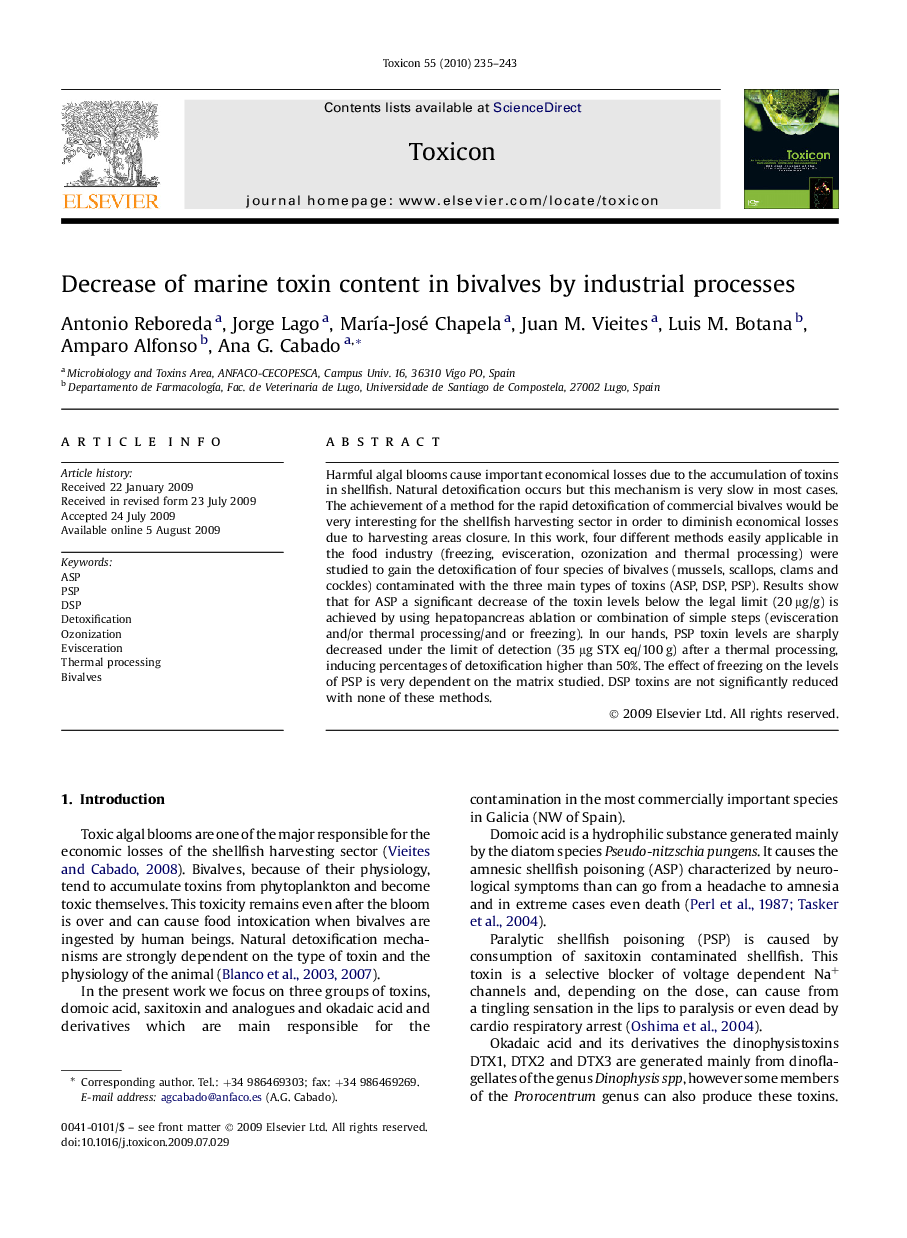| Article ID | Journal | Published Year | Pages | File Type |
|---|---|---|---|---|
| 2065316 | Toxicon | 2010 | 9 Pages |
Harmful algal blooms cause important economical losses due to the accumulation of toxins in shellfish. Natural detoxification occurs but this mechanism is very slow in most cases. The achievement of a method for the rapid detoxification of commercial bivalves would be very interesting for the shellfish harvesting sector in order to diminish economical losses due to harvesting areas closure. In this work, four different methods easily applicable in the food industry (freezing, evisceration, ozonization and thermal processing) were studied to gain the detoxification of four species of bivalves (mussels, scallops, clams and cockles) contaminated with the three main types of toxins (ASP, DSP, PSP). Results show that for ASP a significant decrease of the toxin levels below the legal limit (20 μg/g) is achieved by using hepatopancreas ablation or combination of simple steps (evisceration and/or thermal processing/and or freezing). In our hands, PSP toxin levels are sharply decreased under the limit of detection (35 μg STX eq/100 g) after a thermal processing, inducing percentages of detoxification higher than 50%. The effect of freezing on the levels of PSP is very dependent on the matrix studied. DSP toxins are not significantly reduced with none of these methods.
